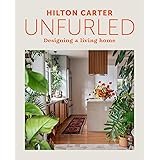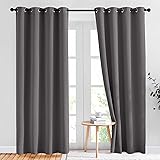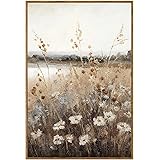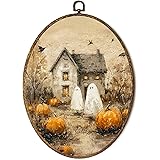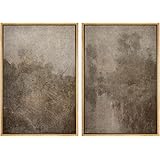Transforming your kitchen into a space that truly reflects your style and meets your everyday needs can often feel like an overwhelming challenge. Many homeowners struggle with balancing aesthetics, functionality, and the desire for a truly unique look that stands apart from standard designs. Fortunately, product and interior designer Ashley Childers, in her recent video, unveils 15 essential designer kitchen ideas that offer elegant solutions to these common dilemmas. Her insights provide a roadmap to creating a kitchen that is not only beautiful and welcoming but also highly functional.
In this accompanying article, we’ll delve deeper into Ashley’s top designer recommendations, exploring how these concepts can elevate your home. We aim to expand on each point, offering additional context and practical considerations to help you incorporate these sophisticated elements into your own kitchen renovation or refresh project. From custom storage solutions to unexpected material choices, these ideas are poised to inspire a truly personalized and timeless kitchen design. Let’s explore how to infuse luxury and bespoke charm into the heart of your home.
Embrace Bespoke Storage Solutions for Ultimate Organization
1. The first step towards a truly organized kitchen is moving beyond standard cabinetry. Bespoke storage solutions are all about personalization, tailoring every nook and cranny to your specific needs and habits. Imagine dedicated bread drawers that keep loaves fresh, or custom veggie bins designed for optimal airflow and easy access. These thoughtful integrations ensure every item has its rightful place, eliminating countertop clutter and maximizing efficiency in your culinary space.
Beyond the obvious, bespoke options can include appliance cubbies that neatly tuck away blenders and toasters, utensil pull-outs strategically located next to your range, or even specialized drawers for serving platters and water bottles. This approach to kitchen design allows for a seamless workflow, as everything you need is precisely where you expect it to be. By assessing your unique kitchen and pantry requirements, you can design storage that perfectly fits your lifestyle, making your kitchen a joy to use.
Expand Functionality with an Innovative Island Extension
2. Kitchen islands are already workhorses, but an island extension takes their utility to the next level. This concept involves adding an extension to one end of your island, often crafted from a different material to visually differentiate its purpose. For example, a warm butcher block surface or a contrasting countertop material can define this new zone, adding architectural interest.
Such extensions integrate additional functionality, transforming the island into a multi-purpose hub. It could serve as extra seating for casual meals, a dedicated chopping block for meal prep, or even a built-in bookshelf to house your cherished cookbooks. This design element not only enhances practicality but also softens the kitchen’s utilitarian feel, imbuing it with a furniture-like quality that feels more comfortable and welcoming. It’s a clever way to add character and expand usable space.
Integrate Natural Beauty with Rough-Cut Stone Walls and Backsplashes
3. Bringing the raw beauty of nature indoors is a trend that continues to captivate, and rough-cut stone walls and backsplashes are a prime example. This design choice involves using natural stone, typically reserved for exteriors or fireplaces, directly within the kitchen. The inherent texture and organic variations of stone instantly introduce a layer of depth and visual interest that’s hard to replicate with other materials.
Utilizing rough-cut stone helps create a powerful connection to other natural elements throughout your home, perhaps echoing a stone fireplace in an adjacent living area. This thoughtful repetition of materials builds a cohesive and layered aesthetic, making the kitchen feel more integrated into the home’s overall design. It’s a bold yet grounding choice that adds significant character and a touch of timeless elegance.
Redefine Elegance with Creative Countertop Edges
4. While natural stone countertops are a cornerstone of many luxury kitchens, the way their edges are finished can dramatically alter their impact. Moving beyond the standard square edge, creative countertop edges allow for a personalized touch that adds sophistication. Consider a raked edge for a subtly textured profile, or a classic ogee edge that brings a sense of traditional grandeur and ornate detail.
This design element can be extended to an integrated stone sink, where the front apron also features the unique edge profile, creating a cohesive and artisanal look. A growing trend in kitchen design is also to mix edge details within the same space, perhaps using one profile on the main counters and another on an island or prep area. This intentional variation adds layers of character and visual intrigue, making your countertops a true design statement rather than just a surface.
Achieve a ‘Wow’ Factor with an Integrated Stone Sink
5. An integrated stone sink is a true showstopper and a testament to bespoke craftsmanship. This design concept involves fabricating the entire sink basin, and often the front apron, from the very same slab of stone used for your countertops. Whether it’s marble, quartzite, granite, or soapstone, the seamless transition from counter to sink creates an incredibly luxurious and high-end aesthetic.
The beauty of an integrated stone sink lies in its unified appearance, eliminating seams and offering a sleek, continuous surface that is easy to clean. Beyond its practical benefits, it serves as a powerful focal point, injecting immense character and a unique “wow” factor into your kitchen design. This bespoke element reflects a commitment to quality and thoughtful detailing, transforming a utilitarian fixture into a piece of art.
Infuse Charm with Hutch-Style Cabinetry and Shelving
6. For a touch of nostalgic charm and warmth, consider incorporating hutch-style cabinetry and shelving into your kitchen. This approach mimics the look of a traditional hutch, where upper cabinets or shelves appear to sit directly on top of a lower countertop. It creates a furniture-like presence, offering a sense of permanence and classic appeal that freestanding units might not.
Hutch-style elements can range from open shelving displaying treasured dishware to closed cabinetry providing hidden storage, all while contributing to a more layered and dimensional look. This design choice can transform an ordinary wall into a captivating focal point, adding architectural interest and a cozy, traditional feel. It’s a perfect way to introduce a sense of heritage and bespoke craftsmanship into your kitchen design.
Master the Art of Layering Hard Surface Materials
7. A truly sophisticated kitchen often results from a thoughtful interplay of hard surface materials. Layering these elements—including countertops, walls, cabinetry, flooring, paint, your sink, plumbing fixtures, and tile—adds depth and richness to the space. The goal is to build tonal layers and create a cohesive yet varied material mix that engages the eye without being overly “matchy-matchy.”
Consider combining a stunning natural stone countertop with a handmade tile backsplash, or integrating both stained wood and painted cabinetry to create vertical interest. Flooring choices should complement, not compete, with these elements. Even lighting fixtures contribute to the material tapestry. When all these permanent materials are carefully selected and layered, they contribute to a harmonious, visually compelling, and welcoming kitchen environment.
Invest in Plumbing Fixtures That Wow
8. Plumbing fixtures are far more than mere utilities; they are the jewelry of your kitchen, serving both vital function and significant aesthetic impact. Investing in high-quality, well-made fixtures is one of the best decisions you can make, considering they are used daily and are expected to last for a decade or even longer. This is not an area to compromise on quality, as a beautiful and durable faucet or pot filler enhances your kitchen experience for years to come.
When selecting these key elements, prioritize rich finishes and timeless designs that complement your overall aesthetic. A robust, well-designed faucet, for instance, not only operates smoothly but also adds a touch of luxury and sophistication. Quality plumbing fixtures elevate the entire kitchen, making a subtle yet powerful statement about attention to detail and enduring style.
Make a Statement with Stone, Metal, and Tile Range Hoods
9. A range hood is a functional necessity, but it also presents a fantastic opportunity to make a dramatic design statement. Moving beyond standard stainless steel, cladding your range hood in unique materials like natural stone, warm burnished metal, or distinctive handmade tile can transform it into a powerful focal point. These materials introduce texture, color, and an artisanal quality that elevates the entire kitchen.
Imagine a grand stone hood that anchors the cooking area, or a sleek, hammered metal design that reflects light and adds industrial elegance. A tiled hood, meanwhile, can introduce intricate patterns or vibrant hues. Designers are increasingly showcasing innovative and creative range hood designs in leading publications, inspiring homeowners to view this essential appliance as a key decorative element in their overall kitchen design.
Dare to Be Different with an Exposed Pantry
10. For the meticulously organized, an exposed pantry offers a unique blend of charm and functionality. This concept involves incorporating glass walls, partitions with glass sections, or glass-inset doors into your pantry or scullery, allowing a full view of its contents. While certainly a bold choice that isn’t for everyone, it can create an incredibly appealing and open aesthetic, reminiscent of classic European cottage kitchens.
An exposed pantry works best for those who love to keep ingredients beautifully decanted into glass canisters and maintain impeccable organization. It transforms everyday essentials into a visual display, adding character and a touch of nostalgic elegance to the kitchen. This design decision actively integrates the pantry into the main living space, making it a visible and celebrated part of your home’s culinary narrative.
Achieve Depth Through Layering Tonal Colors
11. Layering tonal colors is a highly effective, yet surprisingly simple, way to add depth and sophistication to your kitchen. This technique involves selecting various shades and tints from the same color family for different elements within the space, such as cabinetry, walls, and trim. The subtle variations create a rich, enveloping feel without introducing stark contrasts, resulting in a cohesive and harmonious atmosphere.
Even without major architectural changes or cabinetry replacement, a tonal repaint can dramatically transform a kitchen. By applying slightly different shades of a chosen color to perimeter cabinets, the island, and the walls, a profound sense of dimension emerges. This approach creates a welcoming and refined environment, proving that impactful design doesn’t always require a complete overhaul.
Add Detail with Inset Woven Metal, Glass, or Fabric Cabinet Doors
12. Elevate your kitchen cabinetry by incorporating mixed materials directly into the cabinet doors themselves. Insetting beautiful woven metal mesh, exquisite Flemish glass, or even a subtle fabric panel into upper cabinetry adds an unexpected layer of interest and artisanal detail. This technique transforms standard cabinet doors into sophisticated architectural features, making your kitchen feel more curated and custom.
Woven metal mesh can introduce an industrial-chic vibe while allowing a peek at contents without full exposure. Flemish glass, with its textured and slightly obscured view, offers a blend of display and discretion. Fabric panels, meanwhile, can add softness and a unique textural element. These bespoke touches infuse cabinetry with charm and an extra level of visual intrigue, enhancing the overall design of the space.
Incorporate Architectural Grandeur with Wall Paneling and Exposed Beams
13. Wall paneling and exposed beams are architectural elements often associated with living rooms or dining areas, but their integration into the kitchen can add remarkable grandeur and a layered aesthetic. These features provide a sense of history, structure, and character that elevates the entire space. Wall moldings, whether traditional or modern, create visual rhythm and texture on otherwise plain surfaces.
Exposed beams, whether structural or purely decorative, draw the eye upwards, adding height and an inviting, rustic charm. These elements can be applied in countless ways, from rustic farmhouse styles to sleek, contemporary applications, ensuring versatility for any design vision. By bringing these architectural details into the kitchen, you can create a space that feels more established, sophisticated, and deeply integrated into the home’s overall design narrative.
Embrace Softness with Skirted Cabinetry
14. While perhaps an unconventional choice for some, skirted cabinetry introduces a delightful softness and unique charm into the kitchen. Typically seen beneath a sink or in a standalone base cabinet, a fabric skirt helps to break up the expanse of hard surfaces and introduce a tactile, inviting texture. This design element provides a comforting contrast to the rigid lines and materials often found in kitchen spaces.
The beauty of skirted cabinetry lies in its ability to add a touch of antique elegance or a quaint cottage feel, instantly making the kitchen feel more homely and less utilitarian. For those curious about this distinctive look, it’s also a relatively easy DIY project to try. It offers a wonderful opportunity to infuse personality and a surprising textural detail into your kitchen design, creating a more softened and welcoming environment.
Discover Timeless Appeal with European-Inspired Details
15. To truly infuse your kitchen with heritage and timeless charm, incorporate European-inspired details. These elements often feature intricate craftsmanship and classical aesthetics that lend a sense of history and sophistication. Think of finely carved moldings that add ornate architectural interest, or classic checkered floors that evoke a sense of traditional elegance and pattern.
Antique lighting fixtures can cast a warm, inviting glow and serve as conversation pieces, while unique cabinetry hardware like exposed hinges or elegant cremone bolts add bespoke character. Even simple exposed beams, as mentioned earlier, contribute to this rustic European charm. The resurgence of these beautiful European influences in modern designer kitchen ideas proves their enduring appeal, creating spaces that feel rich with story and authentic style.


